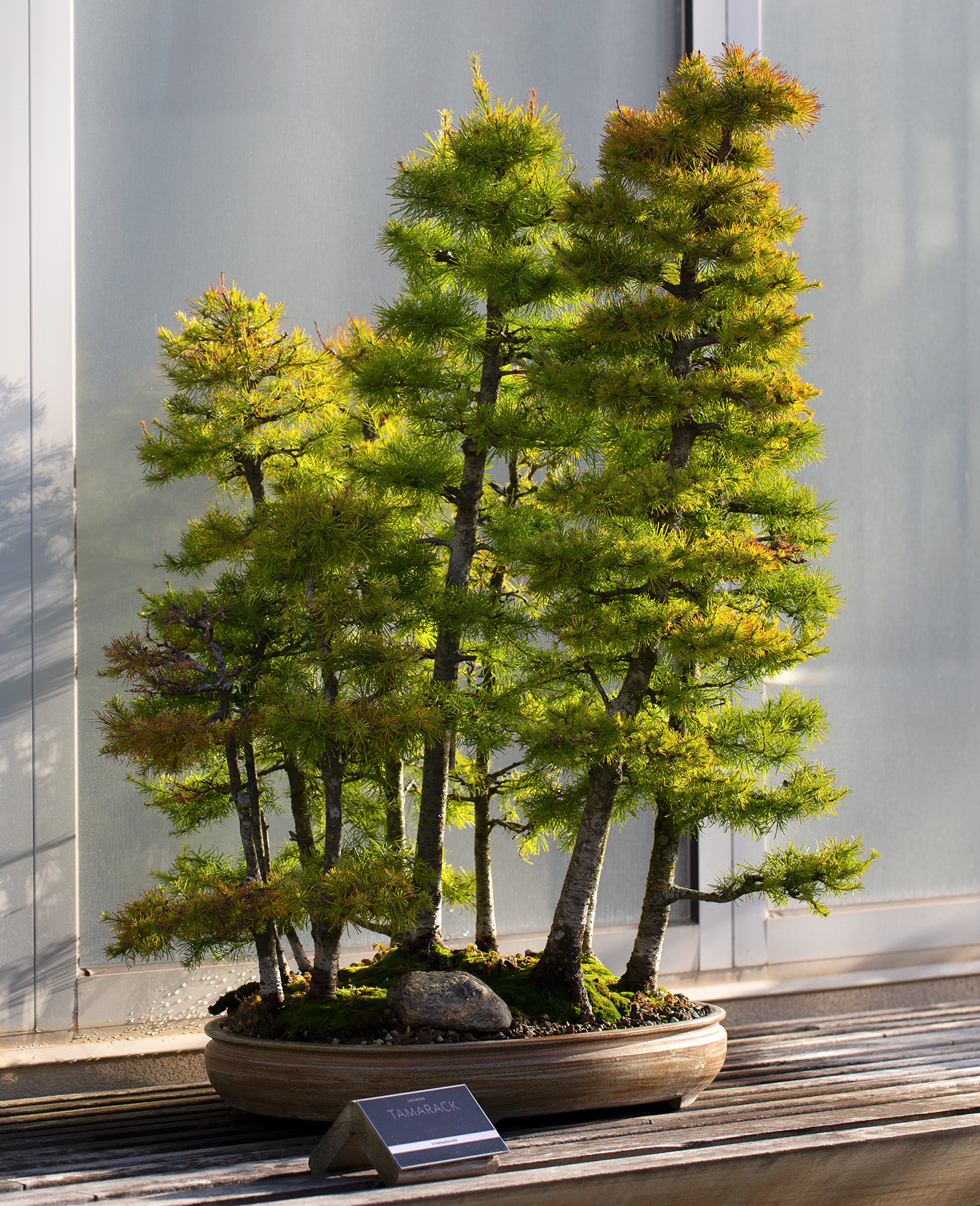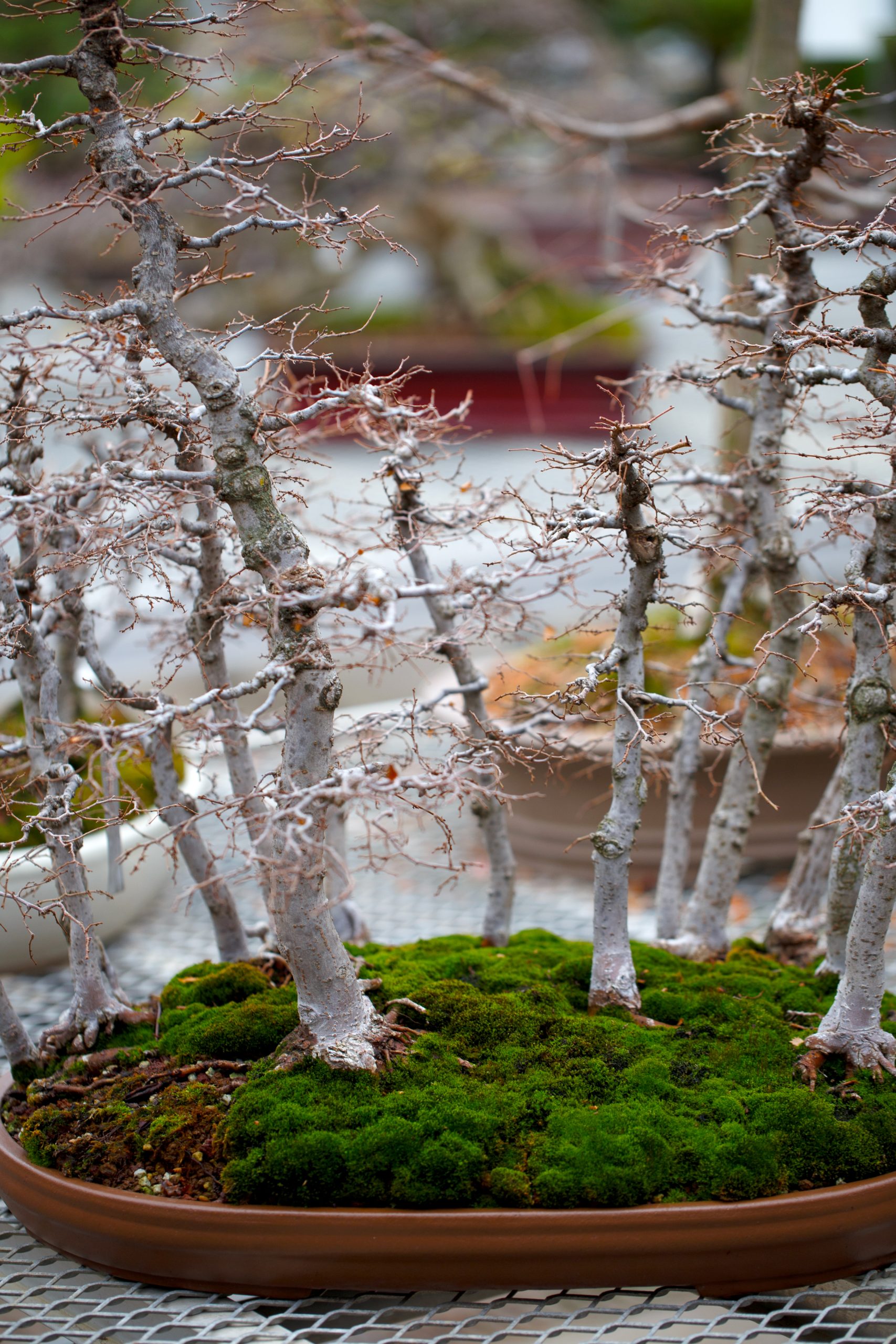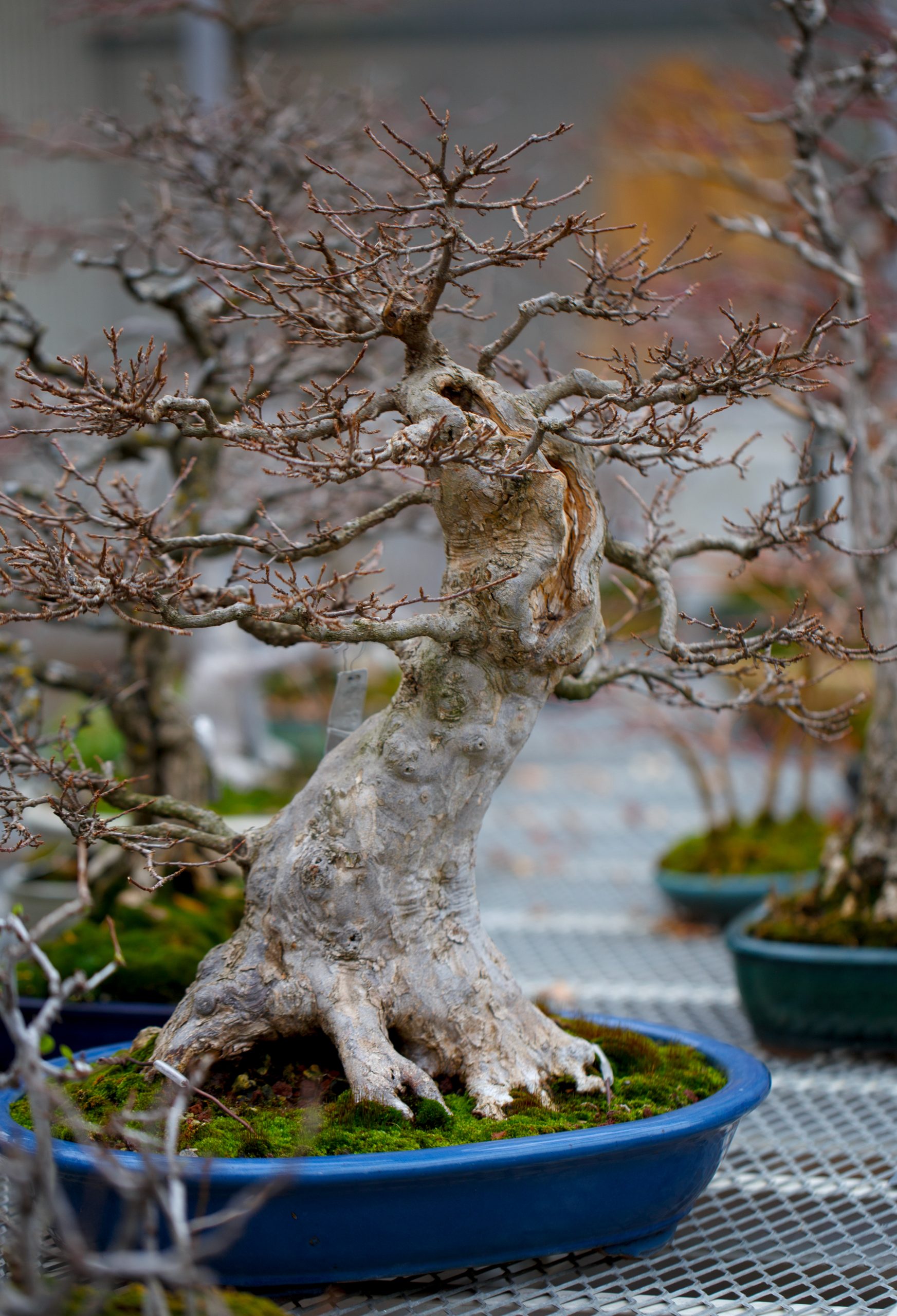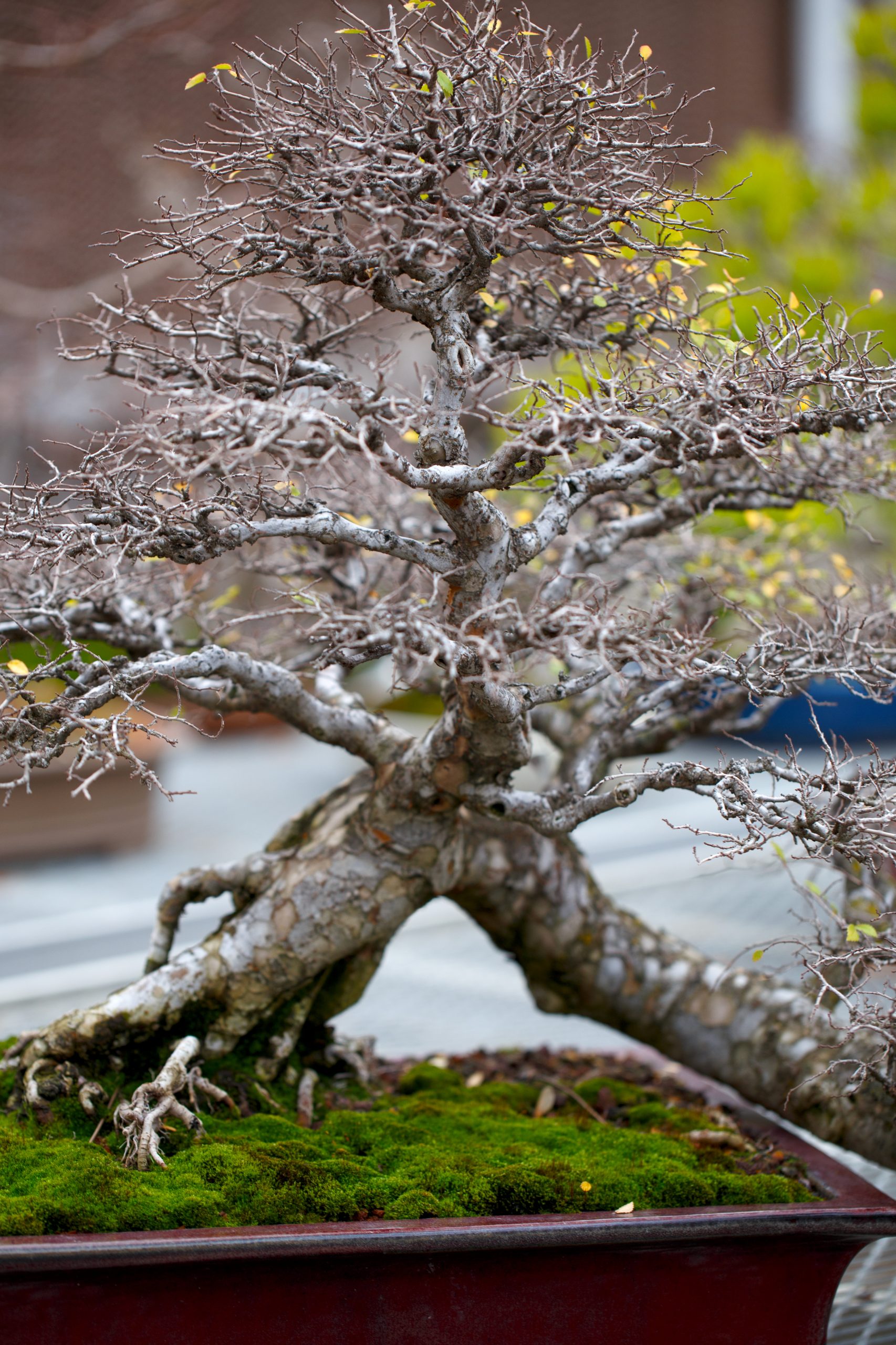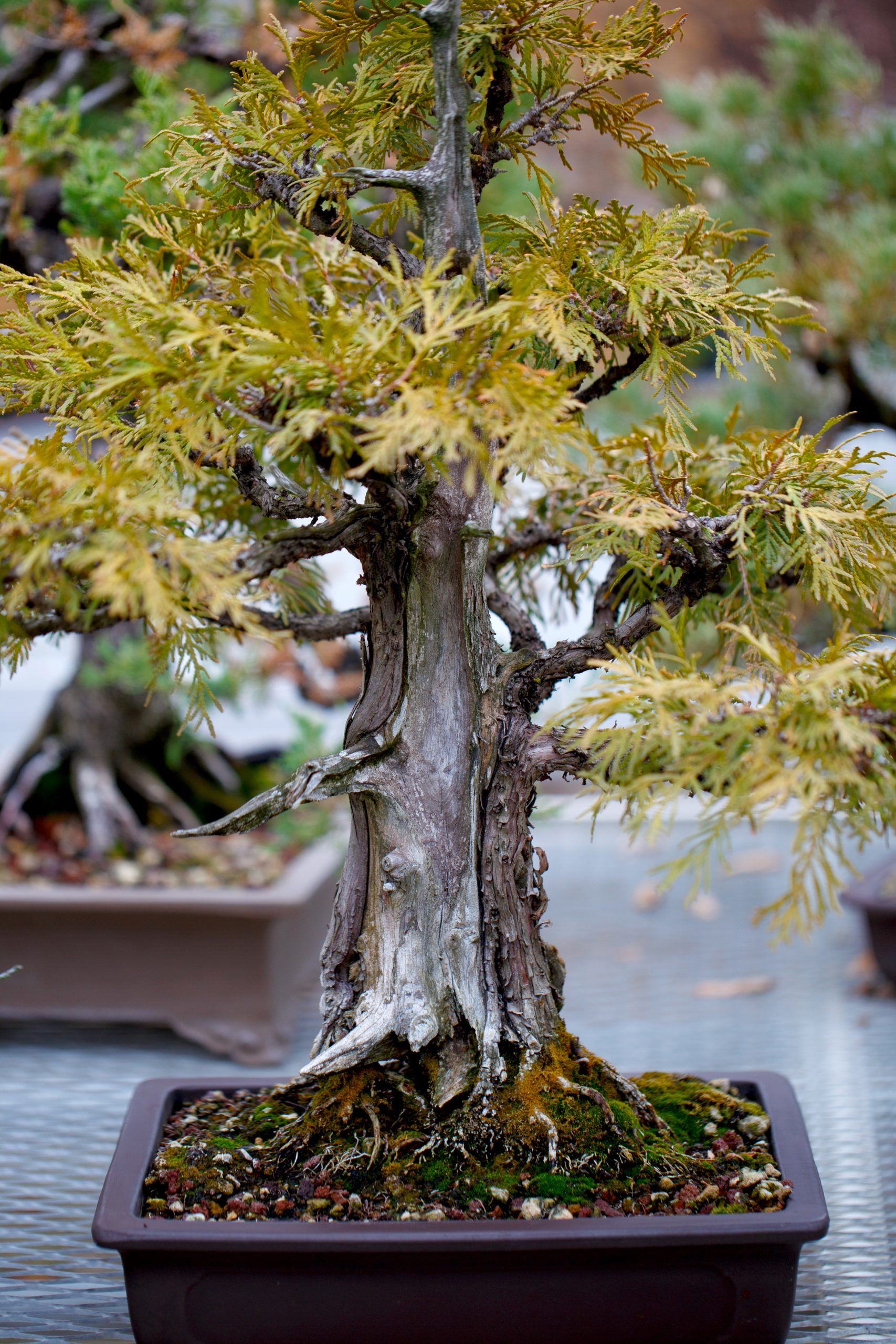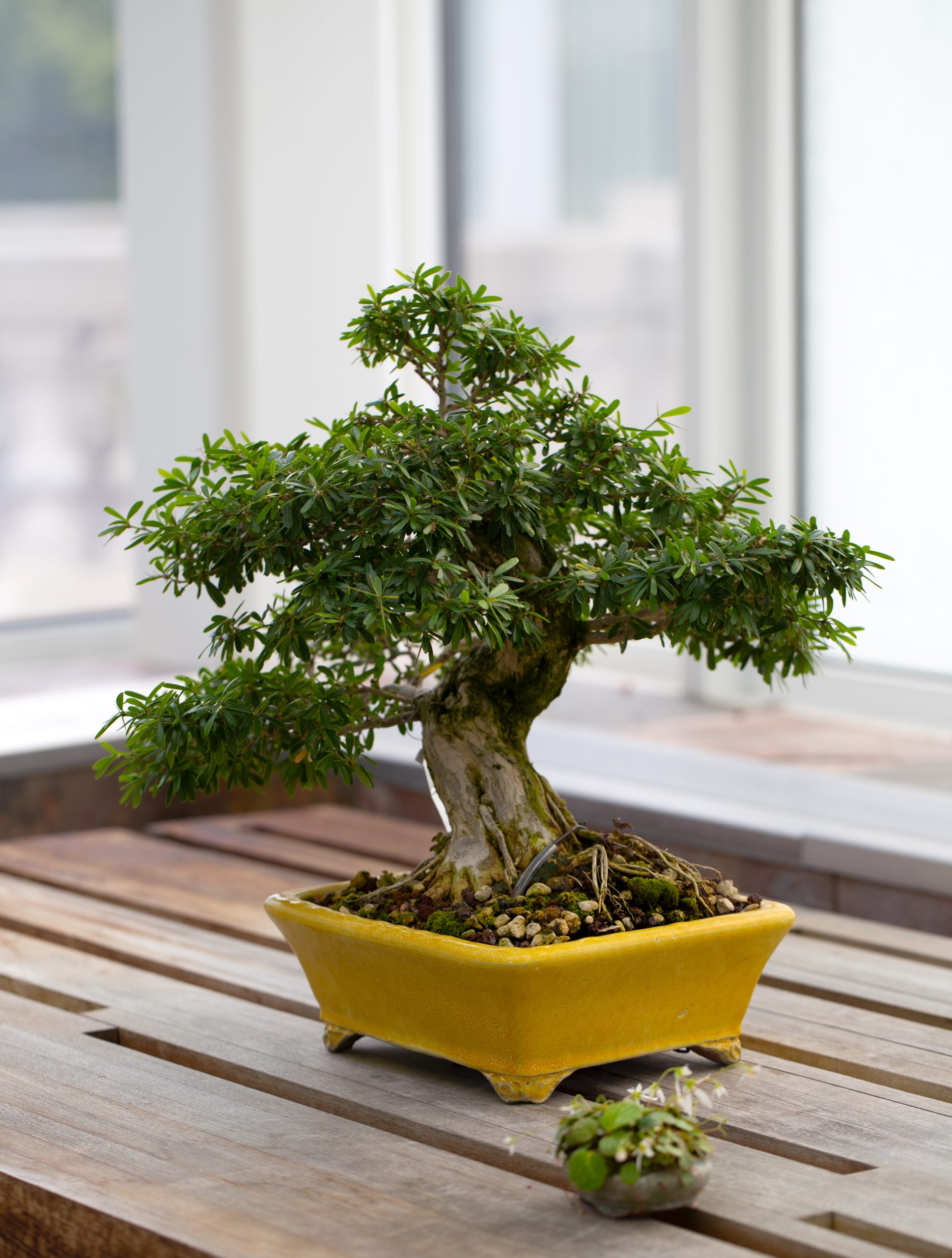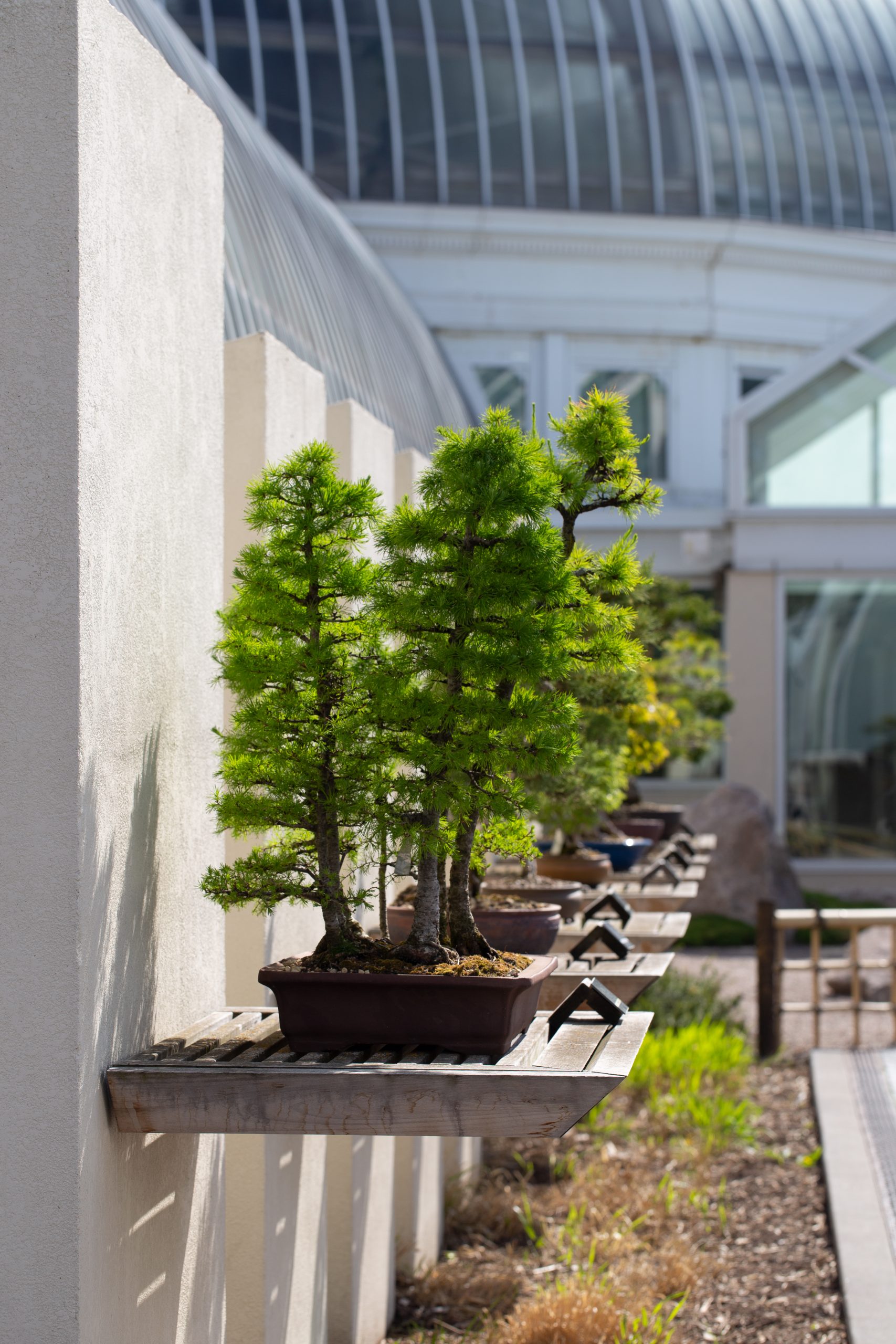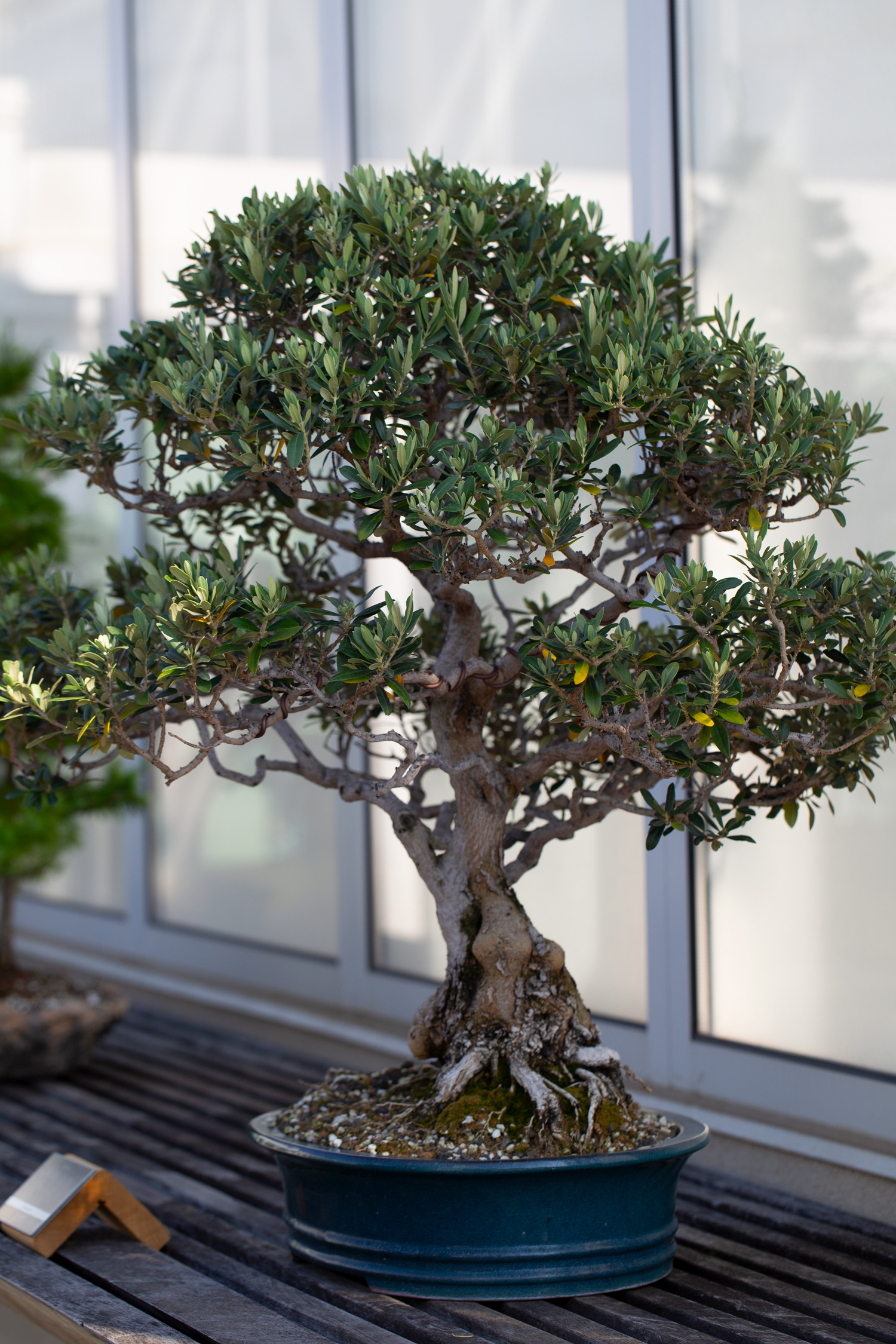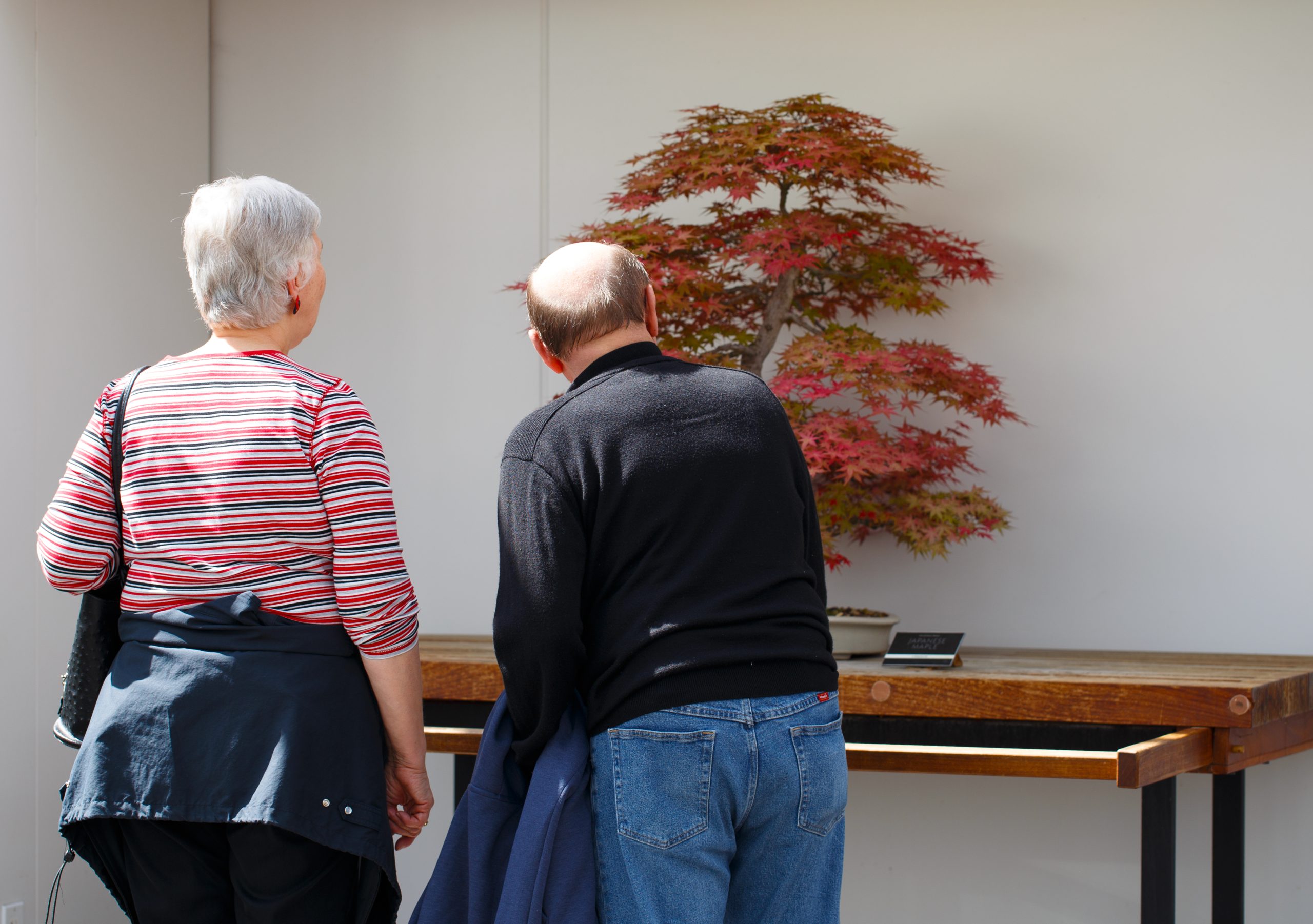Volunteers from Minnesota Bonsai Society have helped the Marjorie McNeely Conservatory cultivate one of the Midwest’s best collections
With their Lilliputian leaves, undulating branches, and fairytale trunks, bonsai can sometimes seem like they come from another world. That’s why Como horticulturist Reva Kos tries to take the mystery out of these miniature potted trees when she talks with curious visitors at the Marjorie McNeely Conservatory.
“I want visitors to know that really anyone can create a bonsai,” says Kos, who has served as the curator of Como’s bonsai collection for the past decade. “They’re special trees because of how we take care of them, but they’re just trees. They’re not magically small—they’re just well loved.”
Over the last three decades, the Marjorie McNeely Conservatory’s bonsai collection has been very well loved—not only by Como’s horticultural staff, but also by the Minnesota Bonsai Society. Starting in the early 90s, when First Bank donated a sizable collection of bonsai to the Conservatory, a long list of dedicated volunteers from the Minnesota Bonsai Society (MBS) have contributed their time and expertise in training one of the best bonsai collections for public display in the Midwest. “We wouldn’t have the collection we have without the Bonsai Society,” says Kos. “Working with our volunteers is a collaboration. Everyone who works with bonsai is opinionated about what should happen next with a tree, and it’s fun to bounce ideas off each other.”
MBS member Kirk Hedberg agrees. “With other kinds of artwork, like painting or sculp- ture, you’ll reach a point where you know it’s done, but the thing that’s fascinating about bonsai is that you’re never done—the tree keeps growing and adapting, and you come to an agreement with the tree over a long period of time about how it’s going to look. The tree has ideas and you have ideas, and they’re not always going to mesh.”
A bonsai enthusiast since the 1970s, Hedberg, a retired chemistry teacher from Afton, makes the trip to Como every week to help prune, wire, clean and repot the Conservatory’s collection of more than 130 trees, which range from traditional Japanese maples and junipers, to Ponderosa pines from the Rocky Mountains and Tamarack from Minnesota’s north shore. The wide variety of species, sizes and characteristics of Como’s bonsai allows Kos to select the trees that are blooming or look the best at a given moment for public display in The Ordway Gardens. The upcoming Mother’s Day Bonsai show, slated for May 13 and 14, is a great time to discover the beauty of bonsai, with a few of Kos’ and Hedberg’s insider tips.
Leaning In: Bonsai trunks often tip toward the viewer, a visual trick that draws viewers in to the miniature world bonsai masters are trying to create. But leaning in is not a requirement. “Once you learn all the rules of bonsai, you discover that some of the most beautiful trees break them all,” says Hedberg.
Asian Roots: Bonsai has roots that go back to China in 700 AD where crafting elegant potted trees or “pun-sai” was only for the elite. By the 1200s, bonsai had become a mainstay of Japanese horticulture, spreading through Europe and the West by the late 19th century. As a result, every culture has a certain style, says Hedberg, from the more densely “helmeted” trees you might see in a European collection, to the airier American style influenced by California bonsai master John Yoshio Naka, who believed branches must “leave room for the birds to fly through.” No matter where they come from, Kos says, bonsai are typically planted in a soilless mixture of pumice, lava rock, and akadama, granular clay-like material mined from the volcanic soil near Japan’s Mount Fuji.
Bonsai Styles: Como’s collection includes a wide range of bonsai styles and plant materials, like the Ponderosa pine featured above. Each inset also features a distinct aesthetic style: examples shown above, the Trident Maple with an S-shaped trunk is trained in the informal upright style (Moyogi ); the Japanese Greybark Elm are arranged in a forest style (Yose-ue); the White Cedar represents the formal upright style (Chokkan); and the Chinese Elm features a semi-cascading style (Han-kengai), with branches that drop below the top of the pot.
Artificial Aging: Some of Como’s bonsai are more than 450 years old, but many more are just trained to look that way, with winding trunks and flaring root systems (Nebari) that make the tree look like it’s survived the elements. “Age is an important part of the aesthetic,” says Hedberg. “If you can make a 20-year-old tree look like it’s 200 years old, that’s a successful bonsai.”


